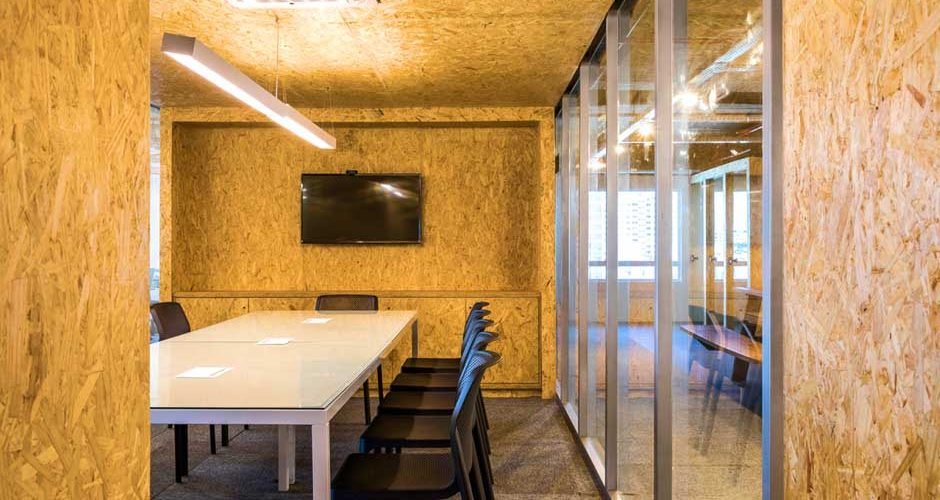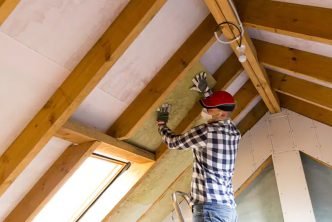Are you looking to learn more about OSB and how it can be used in construction and renovation projects? Look no further! In this article, we will delve into the composition of OSB and explore its various applications.
From subflooring to roof sheathing, OSB offers excellent structural support and stability. Not only does it provide a solid base for flooring materials, but it also helps to distribute loads evenly across the building’s framework. Whether building a new home or renovating an existing one, OSB is an ideal choice for your project due to its affordability and versatility.
Stay tuned as we discuss the benefits of using OSB in building projects, provide tips on working with this material effectively, and even explore some creative ways to incorporate OSB into your design plans.
Whether you’re a DIY enthusiast or a professional contractor, this article will equip you with valuable knowledge on making the most of this versatile material. So let’s get started!
Table of Contents
#1 Understanding the Composition of OSB
So, what is OSB? And what can you do with it? Well, let us break it down for you.
OSB stands for Oriented Strand Board, a versatile building material composed of layers of wood strands compressed together using resin. It’s an engineered wood product widely used in construction due to its strength, durability, and cost-effectiveness.
The composition of high-quality OSB boards consists of three layers: the surface layer, core layer, and back layer. The surface layer comprises smaller wood strands tightly compacted to provide a smooth finish and optimal bonding with other materials.
The core layer consists of larger wood strands oriented in different directions to enhance its structural integrity. Finally, the back layer is similar to the surface layer but provides additional support and stability.
All these layers are bonded together using resin under high pressure and temperature conditions to create a solid panel. This composition gives OSB its excellent strength-to-weight ratio and makes it suitable for various applications such as roof decking, wall sheathing, flooring, and more.
Whether constructing a new house or working on a DIY project, OSB is a reliable choice for your building needs.
#2 Applications in Construction and Renovation
For applications in construction and renovation, OSB can be a versatile and cost-effective material to consider. Whether building a new home or renovating an existing one, OSB has various applications that can meet your needs.
One common use of OSB is as sheathing for walls and roofs. It provides structural support and acts as a barrier against moisture, making it ideal for protecting the interior of a building from the elements.
Additionally, OSB can be used for subflooring, providing a sturdy base for flooring materials such as hardwood or laminate. Its strength and durability make it suitable for heavy foot traffic areas.
Moreover, OSB panels can be used for decorative purposes such as wall cladding or furniture construction. Its smooth surface can easily be painted or stained to match any aesthetic preference.
Overall, the versatility and affordability of OSB make it an attractive choice in construction and renovation projects.
#3 Benefits of OSB in Building Projects
One major advantage of incorporating OSB into your building projects is its remarkable strength and durability, allowing for long-lasting structures that withstand various environmental conditions.
OSB, oriented strand board, compressed wood strands with adhesive to create a solid panel. This construction material offers superior stiffness and rigidity compared to alternatives like plywood. It has excellent load-bearing capacity and can support heavy loads without warping or bending.
OSB has enhanced moisture resistance properties, making it suitable for use in high-humidity or wet areas such as bathrooms and basements. Its dimensional stability ensures the panels stay intact even when exposed to fluctuating temperatures and humidity.
Moreover, OSB is cost-effective compared to traditional building materials while providing comparable performance. It’s readily available in large sheets, reducing installation time and labour costs.
Overall, incorporating OSB into your building projects offers multiple benefits in strength, durability, moisture resistance, cost-effectiveness, and ease of installation.
#4 Tips for Working with OSB
Remember to properly handle and store OSB panels in a dry and flat area to ensure smooth and efficient construction. Before starting any cutting or installation, inspecting the panels for any damage or defects is important.
Make sure to measure accurately and mark the panels before cutting, using a straightedge or square as a guide. When fastening the panels, use screws or nails designed for OSB to prevent splitting or damaging the material.
It’s also recommended to leave a small gap between panels for expansion due to changes in humidity. Additionally, be mindful of heavy loads on unsupported edges, as this can cause sagging or bending of the OSB.
Finally, protect exposed edges with appropriate sealants or coatings to prevent moisture penetration and prolong the lifespan of your OSB project.
#5 Exploring Creative Uses for OSB
Let’s dive into the world of OSB and discover all the exciting ways you can unleash your creativity with this versatile material!
OSB, or Oriented Strand Board, is for more than construction projects. You can use it in various creative endeavours as well.
For example, you can use OSB as a canvas for painting or drawing, creating unique and textured artwork. It can also be cut into different shapes and sizes to make furniture like shelves or tables.
With its natural wood grain look, OSB can add a rustic and modern touch to any interior design project. Additionally, you can experiment with staining or distressing techniques to give it a more vintage appearance.
The possibilities are endless when exploring the creative uses for OSB!
So, What Is OSB?
In conclusion, now that you better understand what OSB is and how it can be used, you’re equipped with valuable knowledge for your construction and renovation projects.
OSB’s composition of wood strands and adhesive makes it a durable and cost-effective option for various applications such as roofing, flooring, and wall sheathing. Its structural strength, moisture resistance, and versatility make it an ideal choice for residential and commercial buildings.
When working with OSB, remember to handle it carefully to avoid damaging the edges or surfaces. Use appropriate tools and techniques during installation to ensure a secure fit.
Additionally, consider exploring creative uses for OSB beyond traditional building applications. From furniture pieces to decorative panels, this versatile material offers endless possibilities to unleash your creativity.
Overall, by utilising OSB in your projects, you can benefit from its affordability, durability, and versatility while achieving high-quality results. So go ahead and incorporate OSB into your next construction or renovation endeavour—you won’t be disappointed!





